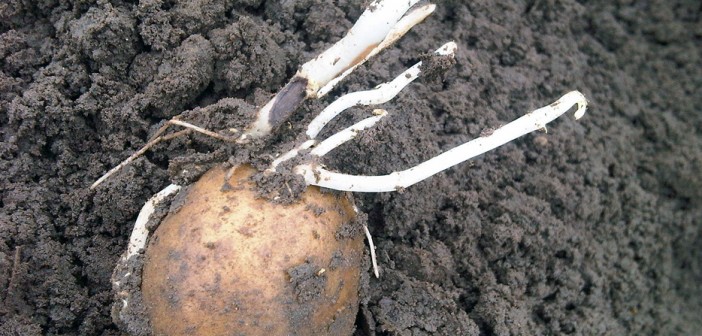An increasing incidence of nematodes in potato field soils risks rising levels of Rhizoctonia infection hitting emerging crops, and affecting plants right through to tuber quality at harvest, warns Spud Agronomy specialist, John Sarup.
Speaking at a Syngenta Potato Science Live event, Yorkshire-based agronomist, Mr Sarup, reported that nematode feeding damage on root stolons allows the soil-borne Rhizoctionia pathogen to get into plants more easily – with infection resulting in stem and stolon pruning that delays emergence.
“If growth is further delayed by wet or cold soils, the effects can be severe,” he advised. “However, Rhizoctonia is a relatively weak pathogen that we have seen can be effectively controlled in the soil.
“Delayed and patchy emergence has serious implications for crop management,” he added. ”Whilst the canopy appears to recover over the season, it inevitably has a consequence at harvest, with variable tuber size and maturity.” Tubers from Rhizoctonia affected plants are also typically more cracked, split and knobbly, as well as suffering Black Scurf affecting skin finish.
Syngenta trials last year, using Amistar in-furrow in a commercial potato crop, resulted in over 60% reduction in visible Rhizoctonia Black Scurf tuber infection, compared to untreated. Furthermore, there almost 40% reduction in Black Dot on tubers. Overall, there was an eight t/ha (16%) increase in yield, worth around £1120/ha, says Syngenta Technical Manager Douglas Dyas. “Control of Rhizoctonia is also paramount for crop quality and consistency for tubers destined for processing.”

Photo Credit: Syngenta
The post Potato growers warned over risk of rhizoctonia at emergence appeared first on Hort News on 11 March 2016.